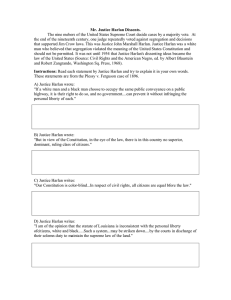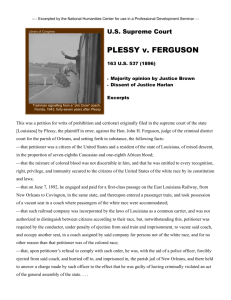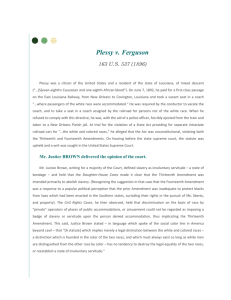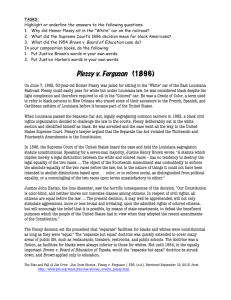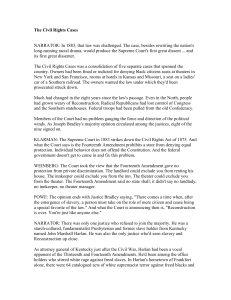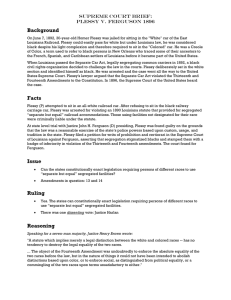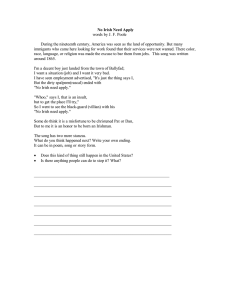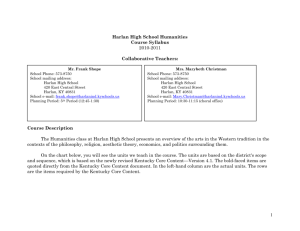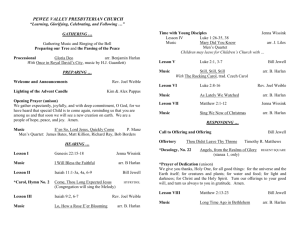Division I: Humanities
advertisement
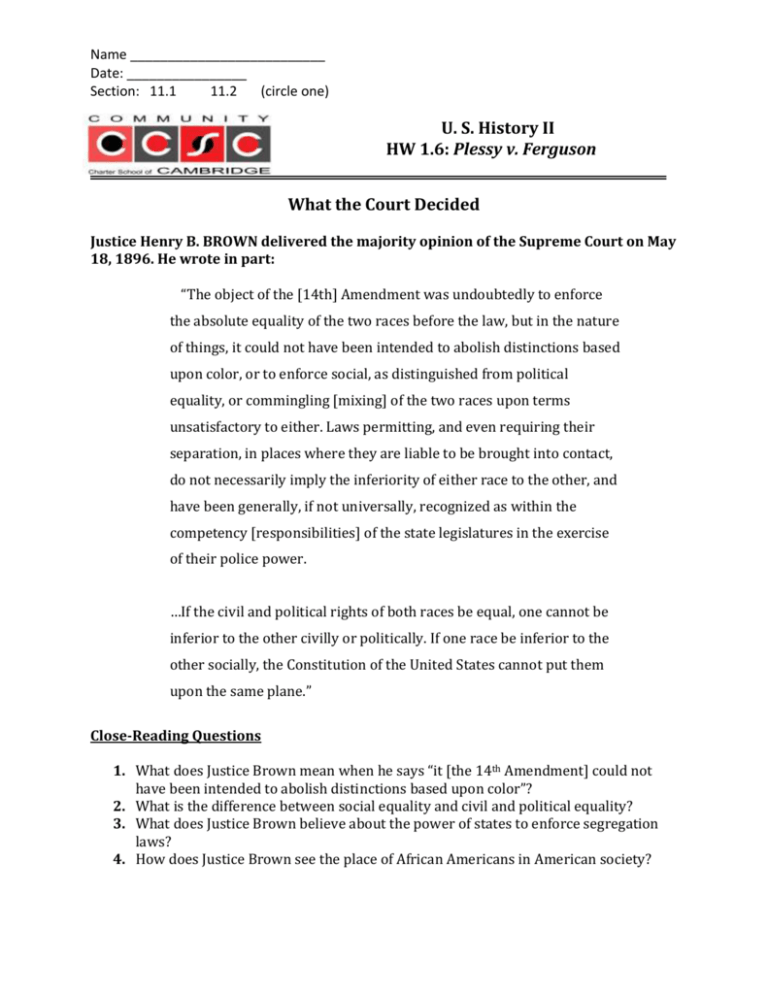
Name __________________________ Date: ________________ Section: 11.1 11.2 (circle one) U. S. History II HW 1.6: Plessy v. Ferguson What the Court Decided Justice Henry B. BROWN delivered the majority opinion of the Supreme Court on May 18, 1896. He wrote in part: “The object of the [14th] Amendment was undoubtedly to enforce the absolute equality of the two races before the law, but in the nature of things, it could not have been intended to abolish distinctions based upon color, or to enforce social, as distinguished from political equality, or commingling [mixing] of the two races upon terms unsatisfactory to either. Laws permitting, and even requiring their separation, in places where they are liable to be brought into contact, do not necessarily imply the inferiority of either race to the other, and have been generally, if not universally, recognized as within the competency [responsibilities] of the state legislatures in the exercise of their police power. …If the civil and political rights of both races be equal, one cannot be inferior to the other civilly or politically. If one race be inferior to the other socially, the Constitution of the United States cannot put them upon the same plane.” Close-Reading Questions 1. What does Justice Brown mean when he says “it [the 14th Amendment] could not have been intended to abolish distinctions based upon color”? 2. What is the difference between social equality and civil and political equality? 3. What does Justice Brown believe about the power of states to enforce segregation laws? 4. How does Justice Brown see the place of African Americans in American society? Name __________________________ Date: ________________ Section: 11.1 11.2 (circle one) Justice John Marshall HARLAN dissented. He wrote in part: “It is said in argument that the statute of Louisiana does not discriminate against either race, but prescribes a rule applicable alike to white and colored citizens. But…everyone knows that the [law] in question had its origin in the purpose, not so much to exclude white persons from railroad cars occupied by blacks, as to exclude colored people from coaches occupied by or assigned to white persons.… Further, if this [law] of Louisiana is consistent with the personal liberty of citizens, why may not the state require the separation in railroad coaches of native and naturalized citizens of the United States, or of Protestants and Roman Catholics? … The white race deems itself to be the dominant race in this country. And so it is, in prestige, in achievements, in education, in wealth, and in power…. But in view of the Constitution, in the eye of the law, there is in this country no superior, dominant, ruling class of citizens…. Our constitution is color-blind, and neither knows nor tolerates classes among citizens. In respect of civil rights, all citizens are equal before the law…The present decision will not only stimulate aggressions upon the rights of colored citizens, but will encourage the belief that it is possible, by means of state [laws], to defeat the beneficent purposes which the people of the United States had in view when they adopted the recent amendments of the Constitution.” Close-Reading 1. 2. 3. 4. What does Justice Harlan think was the real purpose of the Separate Car Act in Louisiana? Why does Justice Harlan bring Protestants and Roman Catholics into his argument? What does Justice Harlan mean when he says “all citizens are equal before the law”? What does Justice Harlan predict will be the result of this Supreme Court decision? Name __________________________ Date: ________________ Section: 11.1 11.2 (circle one) Homework 1. Add an identification for Plessy v. Ferguson (including date, definition, and significance) to the Key Terms section of your binder. 2. In 3-4 sentences, summarize the argument made by Justice Henry Brown, who delivered the majority opinion. __________________________________________________________________________________________________________________ __________________________________________________________________________________________________________________ __________________________________________________________________________________________________________________ __________________________________________________________________________________________________________________ __________________________________________________________________________________________________________________ __________________________________________________________________________________________________________________ __________________________________________________________________________________________________________________ __________________________________________________________________________________________________________________ __________________________________________________________________________________________________________________ __________________________________________________________________________________________________________________ 3. In 3-4 sentences, summarize the arguments made by Justice John Harlan, who dissented. __________________________________________________________________________________________________________________ __________________________________________________________________________________________________________________ __________________________________________________________________________________________________________________ __________________________________________________________________________________________________________________ __________________________________________________________________________________________________________________ __________________________________________________________________________________________________________________ __________________________________________________________________________________________________________________ __________________________________________________________________________________________________________________ __________________________________________________________________________________________________________________ __________________________________________________________________________________________________________________
